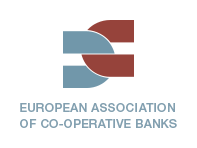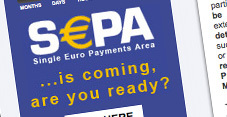SEPA end-date 1st February 2014

For a few years now, mechanisms exist to allow citizens and companies to make payments in euros across Europe as fast, safe and efficient as national payments are today. They have been developed as part of the so called Single Euro Payment Area (SEPA) programme. But, like with the Euro change-over, we all need to make some adjustments in order to be able to use these mechanisms. As of 1st February 2014, European law will make the use of these mechanisms mandatory. It is therefore important to prepare for their use
What is SEPA?
The Single Euro Payments Area (SEPA) is a European Union (EU) integration initiative in the area of payments. The goal is to make payments in euros for citizens and companies in the European Union and the countries of the European Economic Area as fast, safe and efficient as national payments are today. SEPA enables bank customers to make (and receive) cashless payments in euros to anyone located anywhere in Europe, for example by credit transfer or direct debit.
After the introduction of the Euro coins and notes in 2002, the political drivers of SEPA (European governments, European Commission and European Central Banks) started focusing on the integration of electronic payments in the EU. They called upon the financial industry in Europe for their collaboration. As a response, the banking community created the European Payments Council. This European organisation created a set of harmonised payment schemes and frameworks for electronic payments in euros across the EU to help realising SEPA.
The European Association of Co-operative Banks and several of its member banks have been involved in the work of the European Payments Council. Despite the difficult process to get to SEPA, they believe that it is the right way forward. SEPA will bring economic and monetary benefit for consumers, businesses, governments and other users as it creates a scenario with a higher degree of dynamism, competition and innovation.
Migration to SEPA
The mechanisms referred to above, called the SEPA payment schemes were introduced in 2008 (SEPA credit transfer) and 2009 (SEPA direct debit).
These instruments intend to integrate a multitude of pre-existing national credit transfer and direct debit schemes into a single set of European payment schemes. To do so, they define common requirements and rules governing those transactions.
Although the migration to these new instruments has already begun and most banks in the EU are already compliant, they currently co-exist next to the nationally employed schemes. EU Regulation No 260/2012, also referred to as the “SEPA end-date regulation”, defines the deadlines at which the use of the new SEPA schemes becomes mandatory. The deadline for the banks, companies and citizens in the Euro area making payments in euros is 1 February 2014 and for banks, companies and citizens in the non-Euro area Member States making payments in euros is 31 October 2016. As of these dates, the existing national euro credit transfer and direct debit schemes will be definitely replaced by the SEPA instruments.
- To learn more about SEPA, please click here to watch the ECB’s video “What is SEPA? A video introduction” (available in 23 languages)
- To learn more on how to get ready for SEPA, please click here to consult the EPC’s SEPA migration toolkit
- To learn more about how to implement the SEPA Regulation, please click here to download the practical guidance on the implementation of the SEPA Regulation
- To learn more about how SEPA is being implemented in your country, please click here
Finally, do not hesitate to go to your bank to ask for information on what you need to get ready.




